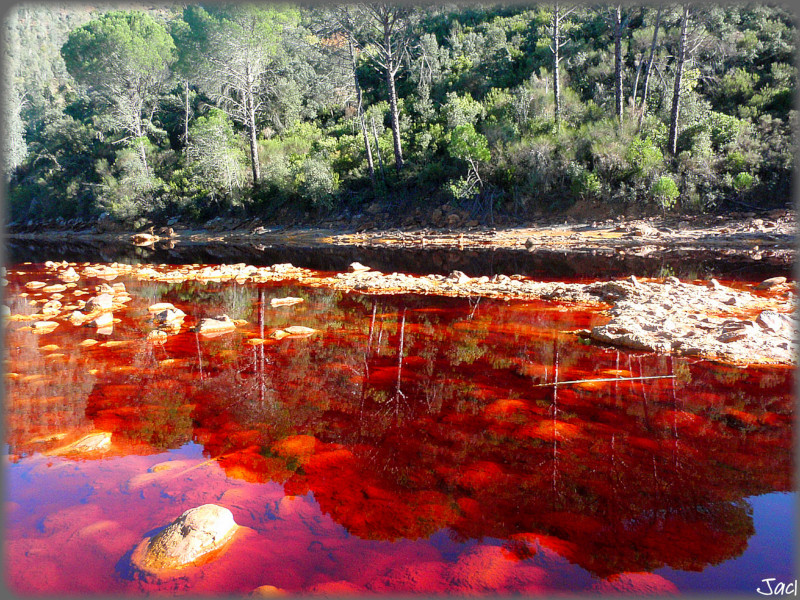
Rio Tinto Facts
- The short yet distinctive term of Rio Tinto serves as the Spanish name for an incredibly unique river that must be seen to be believed. Not surprisingly, though, the remarkable body of water only maintains its distinctiveness over part of its length.
- While not many people outside of its immediate area know of it, the river has a rich and storied history. It has also long served various important economic purposes in its part of the world. One of these also explains its eye-catching coloring.
- The entire region around this marvel of Nature boasts an extensive history of ore-mining. In point of fact, records of this process taking place along its length extend back roughly 5,000 years. Multiple civilizations also used it for this purpose, in fact.
- Among the most notable of these remains the ancient civilizations of the Greeks and Romans. Others also used it, though. A few of these included the societies of the Phoenicians, Moors, and the Visigoths, just to name the most prominent.
- In ancient times, the mining processes around the stunning Rio Tinto primarily focused on gold, silver, and copper. In more modern times, however, this expanded to include other ores. Chief among these comes manganese and iron.
Related Articles
Rio Tinto Physical Description
The remarkable Rio Tinto immediately captivates all those fortunate enough to view its beauty. It also has a respectable length, measuring roughly 62 mi (100 km). Only part of the body of water, however, displays the unique appearance for which it’s now known.
This portion of the incredible creation of Nature extends for about 31 mi (50 km). Its greatest appeal comes in a subsection of the greater flow. Extending over a length equaling roughly half the total of the river, an incredible phenomenon exists.
That’s because it’s this portion of the natural marvel that manifests the incredible array of colors you see here. These include such hues as red, orange, and shades of brown, though the red predominates. These also tend to vary in concentration from day to day.
The water of this section of Rio Tinto itself has an extremely acidic nature. It’s also high in levels of certain metals, most specifically iron. Near the end of the multi-colored section, this aspect of the body of water also slowly begins to thin out, to eventually disappear.
Rio Tinto Location, Formation, and Ecology
The stunning wonder of Nature that man calls Rio Tinto further formed in a section of the world well known for its natural beauty. In point of fact, this geological gem formed in a small portion of the southwestern section of what’s now the continent of Europe.
More specifically, though, its precise region now constitutes the country of Spain. In this beautiful location, the waters of the river originate high in the Sierra Morena Mountains, in the Andalusia region. From there, though, the river flows primarily south-southwesterly.
At precisely what point in the past the river itself formed presently remains undetermined. The origin of the enormous deposits of the various ores in the region, however, has been uncovered. These deposited via hydrothermal activity between 300 – 350 million years ago.
Given the incredible extremes inherent to the nature of the water of Rio Tinto, one might not expect to find life within it. That would be an incorrect belief, though. Although life remains scant and quite unique within its waters, a small amount of its does appear.
This primarily consists of various types of microorganisms, largely consisting of different forms of algae. Relatively large quantities of anaerobic bacteria reside within the sediments it contains, possibly contributing to the condition of the waters.
Features Sharing Its Region
Check out our other articles on 3 Extraordinary Freshwater Fish, Inaccessible Island Rail, Hogenakkal Falls, Hammer Orchid, Chamois, Great Hammerhead Shark, Texas Alligator Lizard
